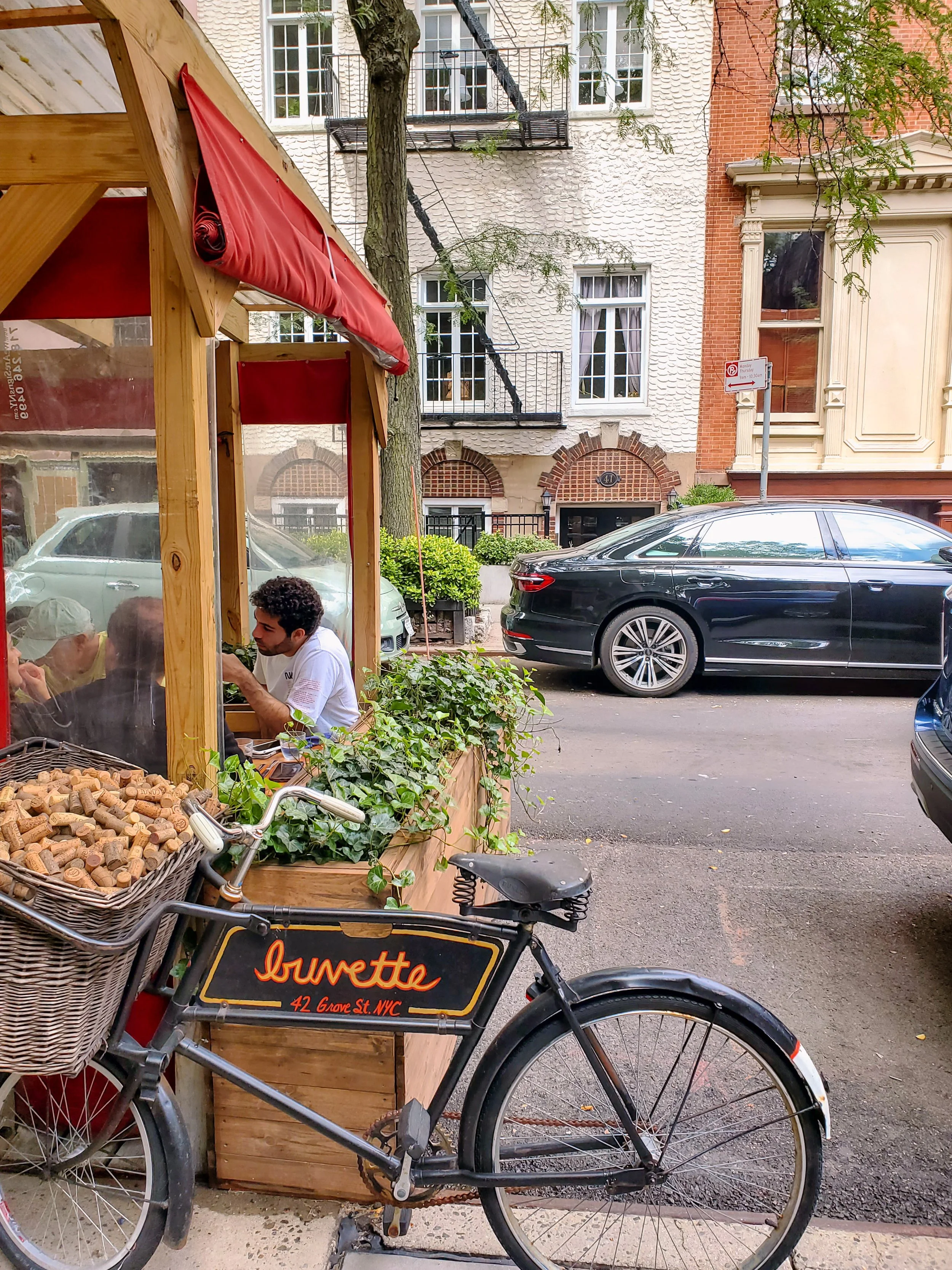The Introvert’s Guide to Solo Travel: How to Explore the World at Your Own Pace
Hot take: You don’t have to be extroverted for solo travel. In fact, some might argue that solo travel is made for introverts. Traveling alone versus traveling in a group already reduces human interaction, which most introverts find overwhelming. That in itself leaves more energy for meeting and interaction with strangers and exploring unfamiliar places alone. Solo travel is a great way for introverts to go out of their comfort zone on their own terms. They can structure the trip around their own needs, choose experiences catered to their interests, and make adjustments to plans without considering fellow travelers. If you are an introvert thinking about taking a trip without your emotional support human, this guide is for you.
Plan With Intention.
Introverts thrive when they feel comfortable and at peace. When planning a solo trip, it’s important to keep this top of mind. The goal is to encourage yourself to experience something new and different, not to flip your world upside down. For example, New York City can be overstimulating for introverts, especially those sensitive to noise and crowds. If you want to see the Big Apple alone but are intimidated, consider staying in Brooklyn. While the high tourist spots will inevitably be crowded, it’s a much more palatable option to get that NYC experience without being thrown into the thick of it. Choices like this can make the most significant difference while planning.
Planning with intention isn’t just about logistics and itineraries. It’s about creating an experience where you feel comfortable enough to enjoy the trip as much as possible. It’s also about understanding your personal limits. If this is your first solo adventure and the idea of a flight on top of a new destination is too much, start closer to home. Find a place that interests you within driving distance or accessible by train. Not having to deal with the airport and all the possible variables that come with flying will be one less thing to worry about. Once you’ve determined your destination, think about where you’d feel the most comfortable and safe sleeping. Would you prefer something that offers privacy, like a cabin, or would you feel better in a hotel where there’s always someone available in case of an emergency?
Once you have transportation and accommodations figured out, start thinking about what you’d like to do and how you’d like the flow of the trip to feel. Packing an itinerary top to bottom would send most introverts back into their hermit holes, so it probably makes sense to build in downtime and maybe keep things structured but still flexible. Planning ahead of time avoids decision paralysis, the potential for surprises, and also an introvert’s natural inclination to stay in and enjoy room service for the whole trip. But it doesn’t have to be so rigidly structured that sticking to a hard schedule is equally as unattractive.
Dive In (Gently) Headfirst.
One of the easiest ways to acclimate to a new destination is by scheduling a guided tour at the beginning of the trip. Look for tours that hit the main hot spots of wherever you’re visiting, or look for something that centers around a particular interest like music, history, the paranormal, or even food. Guided tours help familiarize you with the destination in a casual group setting with people who share your interests, led by a local expert. It’s a fantastic way to break into a new place without worrying about getting lost or figuring out which direction to take, while also introducing you to places that might be fun to return to.
Don’t Reinvent the Wheel & Stick With What You Love.
Fill your trip with the things that are most interesting to you. Don’t plan to see and do things just because you think you should. If the Statue of Liberty doesn’t appeal to you, don’t waste an afternoon just for the sake of doing it. If spending a few hours browsing The Strand looking for a rare book to take home is more your speed, do it! This is your trip, and you’re spending hard-earned money to enjoy it. Stick with what you love rather than forcing yourself to do things just because you think you should or others recommend it. It’s always good to try something new, but not at the expense of enjoying a new place to the fullest extent.
Embrace Solo Activities & Get Centered.
There are so many activities best enjoyed alone. Browsing bookstores. Taking photos on nature hikes. Reading in a park or at the beach. Slowly exploring museums. Fill each day with one or two activities that sound good, and you’ll find the trip will be much more rewarding than you might have anticipated! Find quaint neighborhood restaurants to dine at rather than trendy hotspots, or stick to local bistros and cafes. Room service is always a good idea too (we love a breakfast in bed!).
Solo trips are also perfect for incorporating wellness activities like meditation and sound baths. They are natural solitary events where space is respected and the intention is centered around feeling good and improving mental wellness. A wellness retreat might even be a great opportunity to dive into solo travel. They typically come with a built-in itinerary incorporating downtime to do as you please. A core goal of many wellness retreats is to reduce stress and anxiety, which is exactly what most introverts look for. Still, they also offer plenty of opportunities to interact with others and foster community. So if tackling a new destination alone still sounds like a bit much, look into a wellness retreat within driving distance instead.
Take A Time Out As Needed.
Speaking of downtime, take breaks when you need to without compromise. A great perk of traveling alone is that you can call for a time out without explanation. Was the museum overstimulating? It’s fine. Grab a sandwich from a nearby cafe and take it back to your hotel. Better yet, find a quiet, low-trafficked space – perhaps the hotel garden or a local park – and settle in with an iced coffee while grounding yourself in the grass. Overwhelm is often a byproduct of overstimulation. Too much noise, too many bodies in the same room, too much heat, too much…everything. And once you’re overstimulated, it can be difficult to decompress fully, especially when you’re somewhere unfamiliar. So take time-outs as you need them, no matter how often. Remember, a trip is about the quality of the experience, not the quantity of items you’re checking off a list. Nothing matters if you’re too miserable to enjoy it.
Safety First.
As introverts, it’s easy to go days, even weeks, without telling anyone our plans. In the case of travel, though, it’s important that someone knows where you’re going, when you’re going, and when to be concerned. This is a must for all travelers, no matter where they fall on the introvert-extrovert scale. Before leaving for a trip, share your travel information with someone you trust who will be dependable to check in to know if something’s wrong. They should have all your transportation details, whether it’s flight numbers or the route you’re driving, a reservation confirmation of your hotel or rental, and a rough itinerary of what you plan to do while traveling. Plans will change, and they don’t need an up-to-the-minute play-by-play, but having a general idea of where you intend to spend your time and when is helpful in case of an emergency. Check in once a day, even if it’s a quick text, and determine a random word or emoji that means you need help immediately. Keep it simple but unusual so that it’s easy to understand but not so common that it’s misunderstood. It could be a word like “banana” or an apple emoji. Whatever it is, make sure both parties understand that it will only be used in an emergency.
Final Thoughts.
One of the most rewarding aspects of traveling solo, regardless of whether you identify as an introvert, extrovert, or somewhere in between, is that the entire experience is built around what you love and brings you joy. You don’t have to do anything you don’t want to, and you don’t have to factor in other people’s wants or needs. You can fully immerse yourself in a destination without distractions and be utterly present. It’s an opportunity to sit with our thoughts and enjoy our own company without outside influence. We’re reminded of what we’re capable of, and learn new things about who we are. As introverts, we love our safe space and the comforts of home. But the world has so much to offer. There’s so much to see and so many stories to hear. Even if we break out of our hermit holes once each year, that’s dozens of destinations to experience in a lifetime. And doesn’t that seem worth it?













